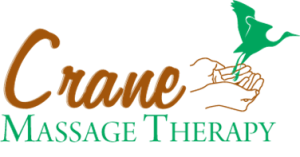Did you know that the main benefit of chicken soup for someone with a cold isn’t due to the steam it produces, but its aroma?
Aromatherapy has skyrocketed in popularity over the past decade, due in part to the ubiquity of stores like Bath and Body Works. Far from the mildly pleasing scent of hand lotion, however, aromatherapy when used in a professional manner has the potential to reduce stress and enhance wellbeing, in addition to potential physical effects on the body’s various systems.
Its use in massage has been particularly studied, and has been found to be effective in a variety of situations like stress and anxiety; depression (including post-natal depression); PMS and menopausal issues; digestive and joint disorders; and muscular pain.
Aromatherapy has been used since ancient times; the relaxing scent of lavender and the invigorating uses of mint were well established in Roman medicinal lore, for example.
The average human is able to identify about 10,000 aromas through the use of their olfactory nerves. The nerves send messages to the brain’s limbic system about the scents inhaled, and the brain in turn releases various chemicals in response. Some, like endorphins, produce immediate, positive sensations like happiness or decreased stress; others serve to attack infection.
The most common method of administering the benefits of aromatherapy is through the use of essential oils. Rather than many lotions and potions available in the mass market today, which can be filled with potential allergens, fillers and artificial fragrances, essential oils are just what they sound like: the distilled essences of various aromas, in specific and measurable quantities.
Although inhaled aromas are the most commonly recalled form of aromatherapy, and can serve in various functions to energize the mind or improve mood and sleep, essential oils that are absorbed into the skin can have their own benefits; for example, they may attack infections, relieve headaches, or aid in circulation. The administration of the oils on places where they are most needed gives them a targeting effect. For example, some essential oils can aid in healing cutaneous issues; tea tree oil has long been used to aid in healing blemishes.
Studies also have divulged the positive effects that aromatherapy has on the body’s circulatory, respiratory and immune systems.
Studies on mice have found that mice who are given large quantities of caffeine become calmer following the inhalation of aromas like lavender and sandalwood. However, the same mice became even more irritable when given “nasty” scents like orange terpines and thymol. The inhaled essential oils were found to be present in the bloodstream in just one hour.
Closer to home, elderly patients in the U.K. who complained about not being able to sleep saw a profound difference after lavender aromas were used in their bedrooms at night. They previously had used sleeping pills to get the same effect. Patients in New York saw anxiety and claustrophobia symptoms reduced by 63% following inhaling the aroma of vanilla.
So take the plunge, and give aromatherapy a try during your next massage!
